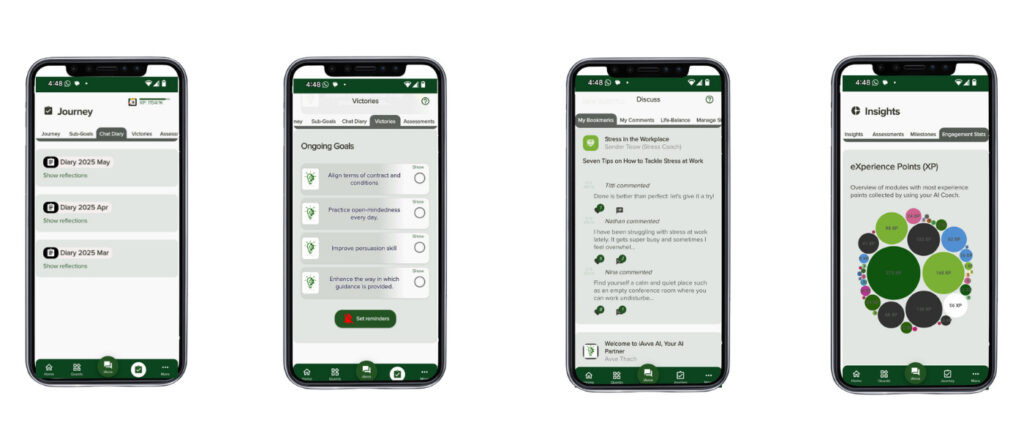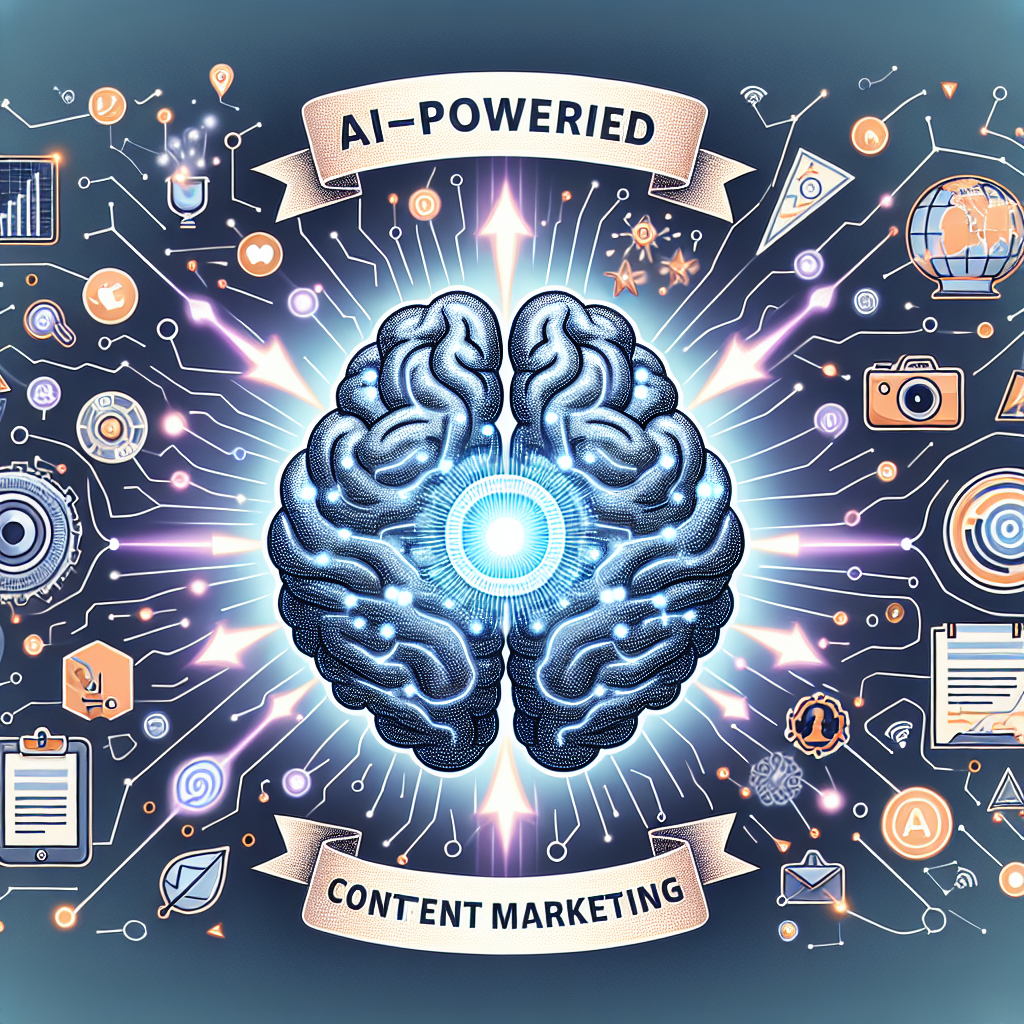The Future of Leadership: How AI is Transforming Executive Decision-Making
Introduction
Welcome to the brave new world of leadership in AI, where algorithms and executives are teaming up to make decisions faster than you can say “machine learning.” As we stand on the brink of this technological revolution, it’s clear that the role of leaders is evolving think less “command and control” and more “collaborate with your AI assistant.”
The future of leadership in AI isn’t just a trend; it’s a fundamental shift that will redefine how we approach decision-making at the executive level. With artificial intelligence leadership becoming a cornerstone for success, savvy leaders are already exploring AI-driven leadership strategies that leverage data analytics to enhance their decision-making prowess.
In fact, the AI market is projected to reach a staggering .59 trillion by 2030, highlighting just how pivotal this technology will be for organizations worldwide. Source.
But what does this mean for those holding leadership roles? Well, it means adapting your skill set to include not only traditional leadership skills but also an understanding of how to effectively integrate AI into your organizational strategy. This new landscape demands leaders who can navigate both human and machine capabilities, ensuring that teams are not just efficient but also innovative.
So grab your virtual surfboard as we ride the wave of change! In this blog post, we’ll explore how artificial intelligence is transforming executive decision-making, and what you need to know to stay ahead of the curve.

The Role of AI in Shaping Leadership
As we dive into the realm of leadership in AI, it’s essential to understand how artificial intelligence is revolutionizing the dynamics of leadership. Picture this: AI isn’t just a tool; it’s like having a supercharged assistant that can analyze data faster than you can say “machine learning.” This transformation is reshaping what it means to lead effectively in today’s digital age.
Historically, leadership has always evolved alongside technology. From the printing press to the internet, each leap forward has redefined how leaders communicate, strategize, and make decisions. Now, with the advent of AI, we’re witnessing a paradigm shift where AI-driven leadership is becoming the norm rather than the exception.
Understanding AI’s Impact on Leadership Dynamics
The integration of artificial intelligence into executive decision-making processes offers a plethora of advantages. For starters:
- Enhanced Decision-Making: Leaders can leverage data analytics for effective decision-making with AI tools, leading to more informed and strategic choices.
- Adaptive Leadership: The ability to pivot quickly based on real-time data insights allows leaders to respond proactively to market changes and challenges.
- Collaboration: AI fosters collaborative leadership by breaking down silos and enhancing communication across teams.
The Historical Context of Leadership and Technology
To appreciate where we are headed, let’s take a quick stroll down memory lane. In the past, leaders relied heavily on gut instinct and experience. Today, thanks to advancements in machine learning and big data analytics, we have access to real-time insights that inform our strategies. This shift not only enhances operational efficiency but also creates opportunities for innovative leadership in AI.
Key Takeaway: Embracing AI isn’t just about adopting new technology; it’s about reshaping leadership roles to foster innovation and adaptability in an ever-evolving landscape.
The impact of AI on leadership extends beyond efficiency gains; it also challenges traditional notions of authority and decision-making. Leaders now need to cultivate not only technical skills but also emotional intelligence as they navigate this new landscape where humans and machines work side by side.
This transformative era calls for future-ready leaders equipped with expertise in both artificial intelligence and human-centric leadership approaches. It’s about balancing human intuition with data-driven insights a dance that requires finesse!
AI Leadership Strategies for Modern Executives
In the ever-evolving landscape of leadership in AI, executives must adopt strategies that not only embrace technology but also enhance their leadership capabilities. Here are some key AI leadership strategies that modern leaders should consider:
- Integrating AI into Organizational Strategy: Successful leaders are not just tech-savvy; they strategically embed artificial intelligence into their core operations. This means aligning AI initiatives with business goals to drive measurable outcomes. Think of it as adding a turbocharger to your car’s engine it’s not just about speed; it’s about efficiency and performance.
- Developing AI-Driven Leadership Skills: Traditional leadership skills need an upgrade. Emphasize developing skills such as data literacy, critical thinking, and emotional intelligence in the context of AI. Leaders who can interpret data insights and foster human-AI collaboration will thrive. Remember, it’s not about replacing humans but enhancing their capabilities with AI tools.
- Fostering a Culture of Innovation: Encourage teams to experiment with AI applications and create a safe space for failure. Leaders should champion innovative thinking, which can lead to breakthroughs in how teams utilize AI for problem-solving. Think of this as nurturing a garden where diverse ideas can bloom.
- Emphasizing Ethical Leadership in AI: As leaders integrate AI, they must also navigate the ethical implications that come with it. This includes ensuring transparency in decision-making processes and addressing biases within algorithms. Ethical leadership in AI is like being a good referee in a game fairness keeps the game enjoyable for everyone involved.
- Balancing Human and AI-Led Teams: The future of work will see humans and machines working side by side. Leaders need to cultivate an environment where both can excel together. This involves understanding when to rely on human intuition versus when to leverage data-driven insights from AI.
- Cultivating Change Management Skills for AI Projects: Implementing new technologies often meets resistance; thus, leaders must be adept at managing change effectively. Equip your teams with the tools and training necessary to adapt swiftly to new systems think of it as teaching someone to ride a bike; they need both balance and confidence!
Did you know? According to recent studies, organizations that actively develop leadership skills in conjunction with their AI initiatives see up to a 68% increase in overall effectiveness (Harvard Business Review).

The key takeaway for executives is simple: embracing AI-driven leadership isn’t just about adopting new technologies; it’s about reshaping how we lead our teams into an uncertain future. By fostering innovation, ethical practices, and collaboration between humans and machines, leaders can ensure they are not just surviving but thriving in this digital age.
If you’re ready to elevate your leadership game with artificial intelligence expertise, now is the time to start integrating these strategies into your organizational framework!
Transformational Leadership with AI
As we dive into the realm of leadership in AI, it’s essential to understand how transformational leadership can be supercharged by artificial intelligence. This isn’t just about having the latest tech; it’s about redefining what it means to lead in a digital age.
Imagine a world where leaders harness AI not just as a tool, but as a partner in decision-making. This partnership enables leaders to elevate their strategies, foster innovation, and drive organizational change more effectively than ever before. Here are some key aspects of transformational leadership with AI:
- Case Studies of Successful AI Integration: Companies like Google and Amazon have demonstrated that integrating AI into leadership roles can lead to remarkable outcomes. For instance, Amazon uses machine learning algorithms to predict customer preferences, allowing leaders to make data-driven decisions that enhance user experience and boost sales.
- Adaptive Leadership and Artificial Intelligence: Transformational leaders must embrace adaptability as a core competency. With AI’s ability to analyze vast amounts of data quickly, leaders can adjust their strategies in real-time based on emerging trends and insights. This agility is crucial in navigating the ever-changing business landscape.
- Balancing Human Insight with AI Analysis: While AI provides valuable data analytics, the human touch remains irreplaceable. Leaders must cultivate emotional intelligence alongside technological skills to ensure that decisions consider both quantitative metrics and qualitative insights from their teams.
- AI-Driven Decision-Making: By leveraging AI tools for predictive analytics, leaders can foresee potential challenges and opportunities. This foresight allows for proactive strategies rather than reactive measures, ultimately transforming how organizations operate.
The future of leadership in AI is not about replacing human intuition; it’s about enhancing it with powerful data-driven insights. Leaders who master this integration will be at the forefront of innovation.
However, it’s important to acknowledge the challenges that come with this transformation. Leaders must be prepared for ethical dilemmas surrounding data privacy and bias in AI algorithms. Navigating these issues thoughtfully will define the next generation of ethical leadership in artificial intelligence.
The global market for artificial intelligence is projected to reach .59 trillion by 2030 (Statista).
In conclusion, transformational leadership with AI is about creating an environment where technology complements human capabilities rather than overshadowing them. By embracing this approach, leaders can inspire their teams while driving meaningful change across their organizations.
The Importance of Ethical Leadership in AI Implementation
As we dive deeper into the world of leadership in AI, one thing becomes crystal clear: ethical leadership is not just a nice-to-have; it’s essential. With great power comes great responsibility, and AI is no exception. Leaders in artificial intelligence must navigate a labyrinth of ethical challenges that can make or break their initiatives.
Navigating Ethical Challenges in AI Leadership Roles
AI systems are only as good as the data they’re trained on, and let’s face it: garbage in, garbage out. This means that leaders must prioritize ethical data sourcing and usage. The stakes are high improperly managed AI can lead to biased decision-making, privacy violations, and even legal repercussions. So, how can leaders ensure they’re on the right path?
- Transparency: Be open about how AI tools operate and the data they utilize.
- Accountability: Establish clear guidelines for responsibility when AI systems fail or produce biased outcomes.
- Diversity: Ensure diverse teams are involved in AI development to mitigate bias and promote inclusive solutions.
Human-Centric Leadership in an AI-Driven World
The future of leadership in AI isn’t just about algorithms and data analytics; it’s about people. Ethical leadership means leading with empathy and understanding the human impact of technology. Here’s how to lead with a human-centric approach:
- Empowerment: Encourage teams to voice concerns about ethical implications and foster an environment where questions are welcomed.
- Collaboration: Work alongside cross-functional teams to integrate diverse perspectives into AI projects.
- Cultural Sensitivity: Recognize that different cultures may have varying perspectives on technology use adapt your approach accordingly.
The impact of AI on leadership is profound. Leaders who embrace ethical practices will not only foster trust but also drive innovation through responsible use of technology.

In conclusion, integrating ethical leadership into AI implementation is not merely a checkbox it’s a transformational journey that shapes the future of organizations. As we move forward, remember: leading with artificial intelligence requires balancing innovation with integrity. The future-ready leader will be one who champions both technological advancement and ethical stewardship.
Diversity and Inclusion in AI Leadership Roles
When we talk about leadership in AI, one of the most pressing issues is the glaring lack of diversity in AI leadership roles. It’s like trying to create a gourmet dish with only one ingredient sure, it’s something, but it’s not going to win any Michelin stars!
Studies show that diverse teams are more innovative and effective. According to a report by McKinsey, companies in the top quartile for gender diversity on executive teams are 21% more likely to outperform their peers in profitability. This isn’t just a feel-good statistic; it’s a clear signal that embracing diversity can lead to better decision-making and enhanced business outcomes.
The Role of Women in AI Leadership Positions
Women are underrepresented in tech, particularly in AI leadership roles. According to the World Economic Forum, women hold only about 26% of AI jobs globally. This gap not only stifles creativity but also limits the perspectives that shape technology development. When women lead with artificial intelligence, they bring unique insights that can transform AI applications.
Promoting Diversity for Innovative Solutions in AI Projects
To foster an inclusive environment, organizations must actively promote diverse hiring practices and create pathways for underrepresented groups. This means:
- Implementing mentorship programs: Pairing aspiring leaders with seasoned professionals can help bridge the experience gap.
- Fostering an inclusive culture: Encourage open discussions about challenges faced by minority groups within tech.
- Leveraging data analytics: Use data-driven insights to identify where diversity is lacking and set measurable goals for improvement.
By promoting diversity within AI leadership roles, companies not only comply with ethical standards but also enhance their capacity for innovative thinking. The impact of diverse perspectives on leadership cannot be overstated it’s akin to adding spices to a bland dish; it elevates everything!
The Challenges of Integrating AI into Executive Decision-Making
Integrating artificial intelligence into executive decision-making is like trying to teach your cat to fetch challenging, often messy, but oh-so-rewarding when it works! As leaders embark on this transformative journey, they encounter a myriad of challenges that can hinder progress if not addressed properly.
Balancing Human and AI-Led Teams Effectively
One of the most significant hurdles is finding the right balance between human intuition and AI-driven insights. While AI can analyze vast amounts of data at lightning speed, it lacks the emotional intelligence that only humans possess. Leaders must ensure that their teams are not just filled with algorithms but also with empathetic individuals who can navigate complex social dynamics.
Cultivating Change Management Skills for Successful AI Adoption
Change management is another crucial area where many leaders stumble. Integrating AI into organizational strategy requires not just technical skills but also a robust approach to managing the human side of change. This means:
- Providing training that helps employees understand AI tools and their benefits.
- Encouraging open communication about fears and uncertainties related to AI integration.
- Creating a culture that embraces continuous learning and adaptation.
Did you know? The AI market is projected to reach .59 trillion by 2030, highlighting the urgency for leaders to adapt quickly and effectively. (Source)
Navigating Ethical Dilemmas in Leadership Roles
Ethical leadership in AI is not just a buzzword; it’s essential for maintaining trust within teams and with clients. Leaders must grapple with questions such as:
- How do we ensure fairness in AI algorithms?
- What measures are in place to protect data privacy?
- How can we prevent bias in AI decision-making processes?
The answers to these questions require a commitment to ethical leadership practices, which are crucial for fostering an environment where both humans and AI can thrive together.
The Role of Data Literacy in Decision-Making
A final challenge lies in enhancing data literacy across the organization. For executive decision-making powered by AI tools to be effective, leaders must ensure their teams can interpret data correctly. This involves:
- Implementing training programs focused on data analysis skills.
- Encouraging collaboration between data scientists and business units.
- Promoting a culture where questioning data findings is welcomed, not frowned upon.
The future of leadership in AI hinges on overcoming these challenges. By balancing human insight with machine efficiency, cultivating change management skills, navigating ethical dilemmas, and enhancing data literacy, leaders can pave the way for successful integration of artificial intelligence into executive decision-making processes.
The Future-Ready Leader: Preparing for an AI-Driven Landscape
As we march into the future, the landscape of leadership in AI is evolving faster than a cat meme goes viral. Today’s leaders need to be more than just decision-makers; they must become adept at navigating the complexities that artificial intelligence introduces to executive decision-making. So, what does it take to be a future-ready leader in this AI-driven world? Buckle up, because we’re diving into some game-changing strategies!
-
Leveraging Data Analytics for Effective Decision-Making with AI Tools
Data is the new oil, and leaders who know how to refine it will find themselves ahead of the pack. By leveraging advanced data analytics tools powered by AI, executives can make informed decisions that are not only timely but also strategically sound.
For instance, companies like Netflix use AI algorithms to analyze viewer preferences and optimize content recommendations. This not only boosts user engagement but also drives subscriber growth. Imagine applying similar insights within your organization it’s like having a crystal ball for strategic planning!
-
Cultivating Emotional Intelligence Alongside Artificial Intelligence Integration
While AI can crunch numbers and analyze trends faster than you can say “machine learning,” it lacks one crucial element: emotional intelligence (EI). Future-ready leaders need to balance their tech-savvy skills with a high EQ. This means understanding team dynamics, empathizing with employees’ concerns about AI integration, and fostering a culture of collaboration.
Consider this: an emotionally intelligent leader can address fears about job displacement due to AI by involving their team in discussions about how technology will augment rather than replace human capabilities. This approach not only eases anxiety but also encourages innovation from within.

Conclusion: Embracing the Future of Leadership with Artificial Intelligence
The landscape of leadership in AI is evolving faster than a toddler on a sugar rush. As we dive deeper into the integration of artificial intelligence into executive decision-making, it becomes clear that the future of leadership is not just about adapting but thriving in this new environment.
Leaders who embrace AI-driven leadership will not only enhance their strategic capabilities but also foster a culture that values collaboration between humans and machines. This partnership can lead to innovative solutions that were previously unimaginable. For instance, consider how organizations are using machine learning to analyze vast amounts of data, enabling them to make informed decisions more quickly than ever before.
Key Takeaway: The most effective leaders will be those who can balance human intuition with AI insights, creating a harmonious blend that leverages the best of both worlds.
Navigating Challenges and Opportunities
Of course, the journey isn’t all rainbows and butterflies. The challenges of integrating AI into leadership roles are significant. From ethical concerns surrounding data privacy to the need for continuous upskilling in leadership skills in AI, executives must navigate these waters carefully.
- Ethical Leadership in AI: Leaders must ensure that their AI strategies uphold ethical standards, promoting transparency and fairness.
- Diversity in AI Leadership: A diverse leadership team can drive more innovative solutions by incorporating varied perspectives into AI projects.
- Cultivating Change Management Skills: As organizations adopt new technologies, leaders must be equipped to manage resistance and foster an adaptable culture.
The Path Forward
Looking ahead, the role of leaders will increasingly pivot towards being facilitators rather than just decision-makers. They will need to cultivate a workforce that is not only tech-savvy but also emotionally intelligent a combination that will be crucial for success in an AI-enhanced environment.
The future-ready leader will prioritize continuous learning and development, ensuring their teams are equipped with the skills necessary for navigating an ever-changing digital landscape. By leveraging data analytics for effective decision-making and fostering emotional intelligence alongside technological acumen, executives can steer their organizations toward sustainable growth.
In conclusion, embracing the future of leadership with artificial intelligence isn’t just about keeping up with trends it’s about setting them. As we move forward, let’s champion innovative leadership in AI that not only drives results but also fosters inclusivity and ethical practices across all levels of an organization. So gear up your journey into the future starts now!










Leave a Reply